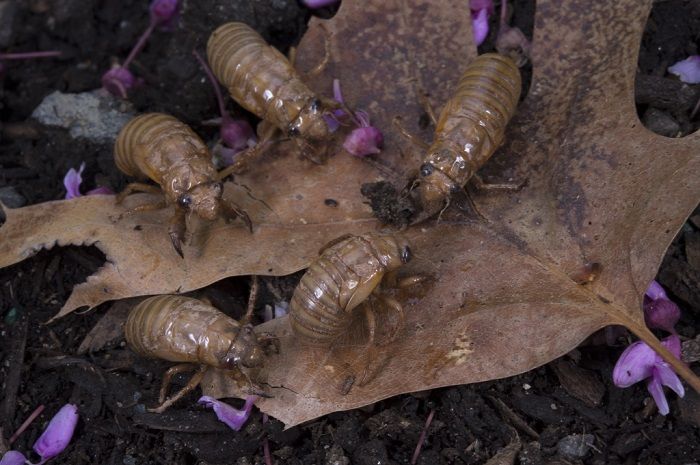Cicadas Surface on Instagram

Your hashtags could help document a once-in-17-year spectacle.
For weeks now, the clumsy cicadas of Brood II have been crawling out of the dirt from North Carolina to Connecticut after spending most of their lives sucking roots underground. But before their noisy mating fest ends, you can help document the emergence using your smartphone.
If you share a picture of the cicadas on Instagram — whether they're crunchy brown nymphs or red-eyed, winged adults — the Wildlife Conservation Society (WCS) wants you to geo-tag the photo and mark it with the hashtag #cicadasinmyhood.
WCS plans to compile all photos submitted with the hashtag into an interactive, user-generated map on its website: http://www.wcs.org/cicadas/
Scientists are intrigued by the insects' life-cycle, which may be the longest of any insect known. Brood II is one of 12 cicada broods in the eastern half of the United States that matures every 17 years. (There are other populations that come out every 13 years.)
"Cicadas are as harmless as they are interesting," Craig Gibbs, an entomologist with the WCS, said in a statement. "They appear every 17 years in such great numbers that they have no natural defenses other than sheer numbers. And, for the first time, people can share their experiences with this event in real-time with Instagram and other social media."
A new generation of periodical cicadas in Brood II is hatching in trees along the Eastern Seaboard now. They will head underground and they won't come back again until they're ready to mate, in 2030. By then, who knows what we'll be using to track their emergence.
Sign up for the Live Science daily newsletter now
Get the world’s most fascinating discoveries delivered straight to your inbox.
Even if you are Instagram-averse, there are other ways you can help document Brood II. Citizen scientists are reporting their sightings at magicicada.org to help researchers at the University of Connecticut map the emergence. Another project, Urban Buzz, is seeking mailed-in cicada samples to look for irregularities on the insects' bodies, which could be indicative of environmental stress caused by urbanization.
Follow Megan Gannon on Twitter and Google+. Follow us @livescience, Facebook & Google+. Original article on LiveScience.com.












